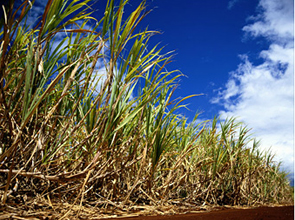Biofuel production is beginning to have an impact on Angola’s economic growth, and is one of the factors behind current growth levels, together with a rise in oil production and more public investment, according to the Economist Intelligence Unit.
In its most recent report on Angola, the EIU for this year forecasts economic growth of 5.9 percent, a which is a string recovery in relation to the contraction of 0.9 percent estimated for last year.
“We expect a string upturn in 2010, supported by a rise in production and oil prices, robust public investment and the start of production of the first biofuel projects,” the EIU said.
Next year’s economic growth is expected to accelerate in line with a rise in oil production.
The Liquid Natural gas (LNG) project, expected to cost US$8 billion, is expected to contribute to a new surge in economic growth in 2012, to 9.4 percent.
In that year Angolan exports are expected to total US$60.7 billion, a third more than those for 2009.
“The forecast is that they will remain generally stable from then on, thanks to slowing in the rise of (oil) production and price moderation,” the Economist said.
The EIU also gave average growth projections for 2013 and 2014, which it estimated at 7.7 percent, and noted that economic expansion would continue to require intensive capital and be dependent on imports as well as being focused on activities such as construction and the financial sector.
Foreign investment is expected to continue to be dominated by Portuguese, Brazilian and Chinese capital, the EIU said.
According to the National Agency for Private Investment (ANIP), in the first six months of the year proposals for investment in the non-oil sector exceeded US$1.25 billion, which was more than three-fold the proposals received in the same period of last year.
Portuguese bank BPI also recently published its projections for Angolan economic growth, which are more conservative than those of the Economist.
For this year, BPI pointed to a rise in GDP of 5.0 percent, accelerating to 6.1 percent and then remaining at around 5.1 percent in the two following years.
These projections are below figures from the revised State Budget, which points to growth of 6.7 percent in 2010, which is below the previous 9.7 percent.
The “positive performance” of the Angolan economy in the first half of the year, BPI said, was due to “recovery of the export sector, due to a rise in world demand and oil price rises on the international market,” as well as improved conditions in the diamond market, which is the second-largest export product.
“The signs from the non-oil sector point to a positive contribution to this year’s GDP. Despite a more restrictive tax policy, under the terms of the agreement with the IMF, public investment took place at a higher rate in the first few months of the year,” it said.
Investment could even be at a higher level, if there had not been an accumulation of delayed payments by the State.
In a report published last week, the IMF also projected growth for the Angolan economy, following a downturn last year.
“The Angolan economy is gradually recovering: (…) foreign currency reserves are being replaced, the budget is in a surplus situation and the level of delayed payments has been reduced since the middle of the year,” said the report on the latest IMF mission to Luanda.
The rise in oil prices and greater containment of expenditure are behind the improvement in public accounts, it said.
For 2011, the IMF continues to project a, “solid rate of growth,” as temporary factors such as problems with oil production are eliminated.
Source: macauhub


